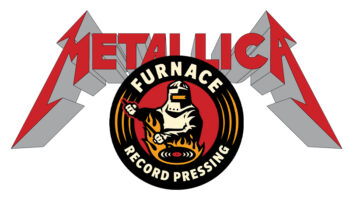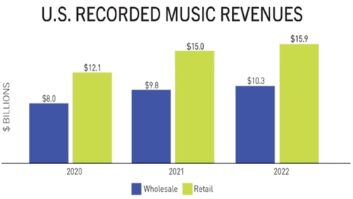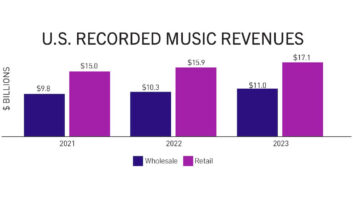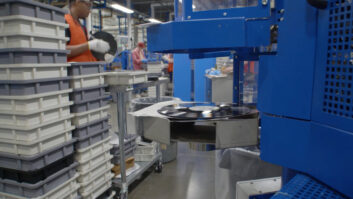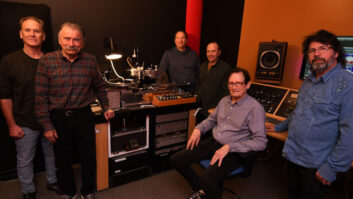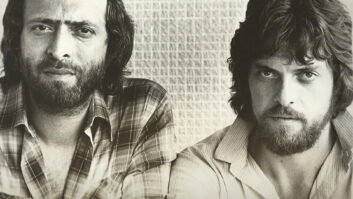HOLLYWOOD, CA—Some commentators have pointed to the resurgence in vinyl sales as a beacon of hope in the face of the continuing slump in CD numbers. At Bernie Grundman Mastering in Hollywood, vinylmastering projects are certainly a frequent occurrence.
“We’re cutting almost every day,” reports owner Bernie Grundman. “It’s been increasing steadily. The resurgence of vinyl started for us in the mid-’90s. There is a company called Classic Records, and we’ve done maybe 600, 700 albums for them since then.”
Mastering master Bernie Grundman But whereas Classic Records appeals largely to audiophiles, he notes, “Now, it’s getting into the mainstream public.”

A vinyl reissue goes straight to the bottom line for a label. Grundman comments, “It’s probably done its run, and they get another run out of it without doing anything.”
That said, only three reissues show up in Nielsen’s 2010 vinyl LP sales figures: Abbey Road by The Beatles (#1, at 35,000 copies), Thriller by Michael Jackson (#5, 14,200 copies) and, a perennial favorite, Pink Floyd’s Dark Side of the Moon (#9, 10,600 copies). In addition to a previously unreleased Jimi Hendrix collection, new releases by newer indie bands fill out the remainder of the Top 10.
Those are 12-month figures, but for comparison, three artists—Taylor Swift, Cake and Amos Lee— have had #1 CD albums this year with 52,000 to as few as 40,000 sales in a week. Total vinyl sales in 2010 were 2.8 million—a new SoundScan record. CD sales still dwarf that number at 326 million for 2010, though that number is the lowest since SoundScan began keeping statistics in 1993.
Grundman, who has amassed a substantial personal vinyl collection, has decades of experience with the format. That’s just as well, since vinyl mastering does present some challenges. “There are a lot of headaches, but [vinyl] can sound spectacular if you don’t exceed the limitations,” he says.
These days, audiophile labels typically favor heavy vinyl (180 or even 200 grams; 130g was originally standard, and some inferior quality LPs were as light as 90g) and often 12-inch, 45 rpm, multi-disc reissues of single LPs. There’s hardly a downside to a medium that, stored properly, offers analog reproduction from 20 Hz to 20 kHz. Conversely, the CD, commercially available since 1982, can stop playing if air gets to the aluminum layer and it oxidizes, or if the plastic yellows and blocks the laser. “I doubt if they’ll last as long as LPs,” says Grundman. “I have LPs that I bought when I was a kid in the early ’50s—they play fine.”
Grundman has two computercontrolled Scully cast-aluminum lathes: one solid-state, one tube, and each with two motors—one for the turntable and a second to rotate the lead screw that precisely drives the cutting head across the disc. The groove is cut into a lacquer-coated, 14-inch aluminum blank, which is sent to the pressing plant where it is cleaned, sprayed with a silver solution and electroplated with nickel to create a metal master. That metal negative is plated to create a positive “mother,” which is QC’d then plated to create the stamper that is used to form the vinyl album.
For optimum results, one metal master can make four mothers, and each mother can make four stampers. In past decades, plants would sometime generate more than that, resulting in poor-quality pressings.
One challenge with vinyl is that while the speed remains constant— either 33 1/3 or 45 rpm—the circumference at the outer edge is about four times that at the runoff. “The playback stylus has an easier job following the indentations on the outer edge,” he says, and reproduces less high-frequency information near the center. In contrast, a CD changes speed as the laser travels from the inside to the outside edge, from 450 to 150 rpm.
The principle is largely unchanged since Edison invented it, notes Grundman; it’s just much more sophisticated. Left-channel information is cut into one 45-degree wall of the groove, and the right channel into the other. Although some engineers cut the groove deeper on louder music, it’s not necessary, he says, although it does ensure that the stylus won’t jump out.
“If you cut it really deep, there’s a problem,” he cautions. “Then you’re using up more space on the disc, so the grooves have to be spaced further apart, because they start to run into each other, and they cause plating problems.”
The smallest groove is about one mil (1/1000 of an inch) and a stylus is three-fourths that. A loud crescendo on a classical recording, which typically has a wide dynamic range, might create a 15 mil-wide groove, and can drive the cutter through the lacquer into the aluminum if the lathe isn’t programmed carefully. “You need to know a few things about what’s usually safe for the level of a normal LP or a louder LP, and what minimum depth you should have to be safe. And you have to know what a bad groove looks like.”
In the 1950s and ’60s, mastering engineers, working with less sophisticated cartridges, would insert filters to ensure the record would track properly. These days, engineers can make much finer adjustments to attenuate sibilance, for example: “We take it in increments. We don’t just throw in a filter and say, that’ll do it.”
Ultimately, says Grundman, “The trick is to compromise the least amount from what you ideally would like to end up with.”
Bernie Grundman Mastering berniegrundmanmastering.com
